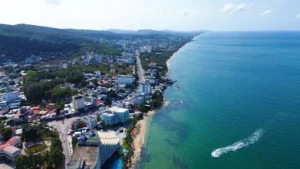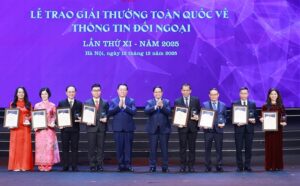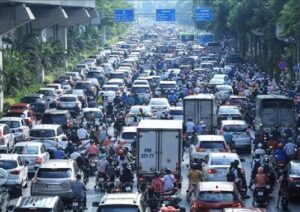Vietnam PM Calls for Ambitious Railway Development, Sets Key Targets

Hanoi, The Gulf Observer: Prime Minister Phạm Minh Chính has urged the nation to push beyond limits in developing a strong railway industry, as he chaired the first meeting of the steering committee for key national railway projects on March 29.
The committee, led by the PM, was formed under Decision No. 609/QD-TTg to oversee major railway projects, including the North-South high-speed railway and several key regional rail links, such as Lào Cai – Hà Nội – Hải Phòng, Hà Nội – Lạng Sơn, and Móng Cái – Hạ Long (Quảng Ninh), alongside urban railway projects in Hà Nội and Ho Chi Minh City.
Major Railway Projects Underway
The North-South high-speed railway, spanning 1,541 km from Hà Nội to HCM City, is a flagship project under Resolution No. 172/2024/QH15. Designed for speeds of up to 350 km/h, the railway has an estimated budget of VNĐ1.71 quadrillion (US$67.34 billion), with implementation planned from 2025 to 2035. The groundbreaking is scheduled for December 2026.
Meanwhile, the Lào Cai – Hà Nội – Hải Phòng railway, a 390.9 km corridor with standard-gauge tracks to support both passenger and freight services, is estimated at $8.36 billion. Construction of Lào Cai station and resettlement areas is set to begin in 2025.
Other key projects include:
- Hà Nội – Lạng Sơn Railway (156 km), linking Hà Nội with Bắc Ninh, Bắc Giang, and Lạng Sơn, with an international rail connection to China.
- Hải Phòng – Hạ Long – Móng Cái Railway (187 km), enhancing connectivity between Vietnam and China.
Additionally, Hà Nội and HCM City plan to build 15 and 10 metro lines, respectively, under Resolution No. 188/2025/QH15.
Strategic Vision for Vietnam’s Railway Industry
PM Chính emphasized the need for a self-sufficient railway industry, mastering technology, rolling stock production, and developing an integrated railway ecosystem. He called for a skilled workforce, directing the Ministries of Construction and Education to establish railway engineering faculties in universities.
To finance the projects, he advocated for diverse funding sources, including state funds, infrastructure bonds, public-private partnerships (PPP), and Transit-Oriented Development (TOD) models, with strict financial oversight to prevent mismanagement.
He also instructed ministries to accelerate technical standardization, policy reforms, and international cooperation, particularly with China, on project agreements. Intersectoral coordination and strict accountability will be enforced to ensure timely execution of projects, with penalties for delays and recognition for excellence.
Next Steps and Implementation
- The Ministry of Justice to finalize a railway design decree in April 2025.
- The Ministry of Agriculture and Environment to develop regulations on temporary forest use for railway construction by September 2025.
- The Ministry of Construction to draft selection criteria for state-owned and private enterprises involved in railway projects.
- The Ministry of Finance to review and approve financial adjustments, including ending ODA and concessional loans for HCM City’s Metro Line 2 (Bến Thành – Tham Lương).
With these ambitious projects, Vietnam aims to modernize its railway infrastructure, enhance connectivity, and position itself as a leader in regional transport development.


